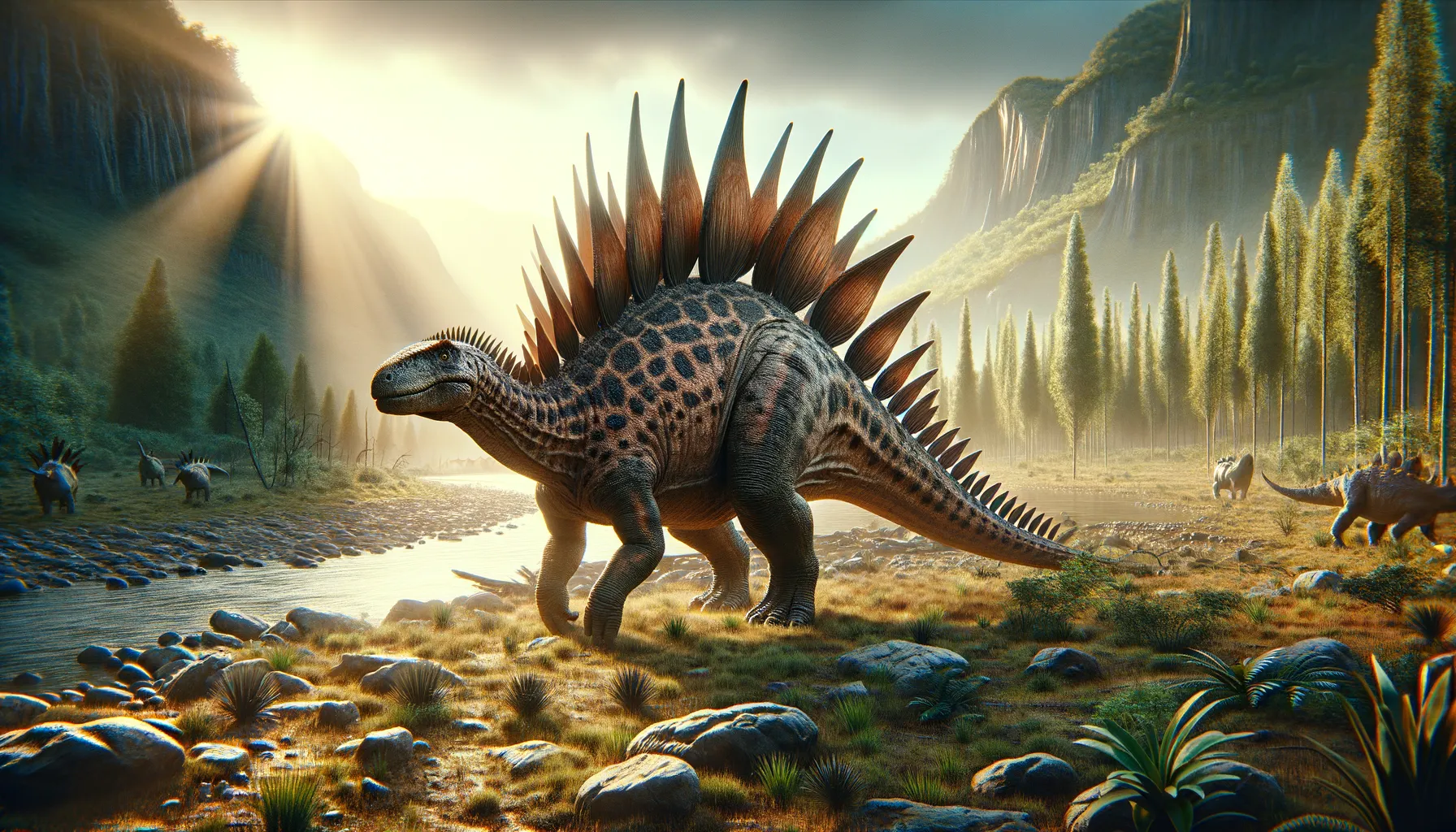
Chungkingosaurus
Armored defense with a spiked tail twist!
Period
Jurassic
Length
Approximately 4 to 5 meters long.
Height
Around 2 meters tall.
Weight
Approximately 700 to 800 kg.
Chungkingosaurus was a small stegosaurid dinosaur that roamed the earth during the Late Jurassic period. Found primarily in China, it is known for its characteristic bony plates along its back and spiked tail. These features served as defenses against predators. Despite its armor, it had a relatively small size compared to other contemporaneous stegosaurs.
Diet
Chungkingosaurus was herbivorous, feeding primarily on the low-growing vegetation of its time. It would have used its beak-like mouth to strip foliage from plants, likely including cycads and ferns.
Hunting
As a herbivore, Chungkingosaurus did not hunt other animals. Its primary concern was locating enough plant material to sustain its large body size, which may have involved foraging over wide areas.
Environmental challenges
Chungkingosaurus faced environmental challenges such as fluctuating climates during the Jurassic period. Volcanic activity and varying sea levels might have influenced the availability and distribution of vegetation it depended on. Predation was another challenge, necessitating its developed protective adaptations.
Speed
Slow moving due to its bulky form.
Lifespan
Estimated to live several decades.
First discovery
Discovered in China in the 1970s.
Fun Facts
- Chungkingosaurus was a herbivorous dinosaur that lived during the Late Jurassic period, about 155 to 150 million years ago.
- Its fossils were discovered in the Sichuan Province of China, named after the city of Chongqing.
- Chungkingosaurus belonged to the Stegosauria group, known for their distinctive plates and spikes.
- This dinosaur was relatively small for a stegosaur, measuring around 4 meters in length.
- Chungkingosaurus had a double row of bony plates along its back, possibly used for display or thermoregulation.
- Unlike some of its relatives, it had relatively short legs, which suggests it was not a fast runner.
- The tail of Chungkingosaurus featured spikes known as 'thagomizers,' which were likely used for defense against predators.
Growth and Development
Chungkingosaurus underwent significant growth from hatching, with juveniles likely vulnerable to predators due to their smaller size. As it matured, its defensive bony plates and tail spikes became more pronounced, offering it better protection. The development rate and size would heavily depend on the nutrition available from its environment.
Habitat
Chungkingosaurus inhabited forest regions with plenty of undergrowth for feeding. The climate during the Late Jurassic was warmer, providing lush vegetation. It shared its habitat with other contemporary dinosaurs and relied on the availability of moist, fertile land to sustain its dietary needs.
Interaction with other species
Chungkingosaurus may have lived alongside and interacted with other herbivorous dinosaurs, possibly having parallel grazing patterns. Its main interactions with carnivorous species would have been defensive, using its tail spikes to fend off attackers. It could form herds or groups for further protection against predators.
Natural lifespan
Chungkingosaurus could live for several decades if it survived predation and environmental threats.
Reproduction
Chungkingosaurus likely laid eggs as part of its reproductive process, similar to most dinosaurs. It may have nested in colonies, with multiple females laying eggs in one area to increase the odds of offspring survival. Parental care post-hatching is uncertain, but young ones might have been left to fend for themselves shortly after birth.
Social behaviour
Chungkingosaurus possibly exhibited social behavior by living in groups for increased protection from predators. While it did not display complex social interactions, grouping could also aid in finding food and navigating its environment. There is, however, limited evidence on its social structure beyond these general assumptions.
Fossil locations
Fossils of Chungkingosaurus have been predominantly found in the Sichuan Province of China. Excellent preservation of its skeletal structure in this region has provided detailed insights into its physical characteristics and potential lifestyle. These fossil sites have contributed greatly to understanding the diversity of stegosaurs from the Jurassic period.
